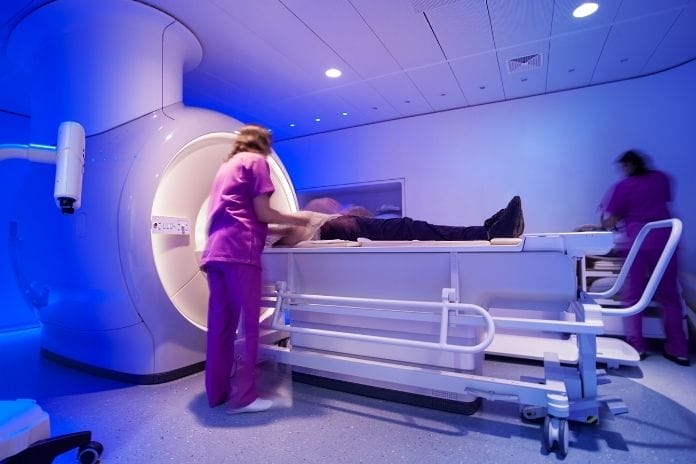If a doctor does not have a clear image of the innerworkings of their patient’s body, very often they can only operate based on their assumptions. The essential tools used in radiology are common lifesaving fixtures in hospitals all around the world—as they should be.
Ultrasound Machine
An ultrasound machine produces images of structures and organs in the body using high-frequency sound waves. To conduct an ultrasound test, a sonographer puts a thin layer of a clear, water-based gel over the examined skin. The gel minimizes the acoustic impedance so a clearer image can be produced.
The sonographer applies a transducer, or handheld probe, to the skin. Using this device, a real-time video of what is happening inside the body can be seen on the attached screen. Ultrasound machines are one of the essential tools in radiology because they can assist in studying the development of a fetus, muscles and tendons, and blood vessels. They also do not require ionizing radiation, unlike X-ray machines or CT scanners.
X-Ray Machine
X-ray machines use a form of radiation called electromagnetic waves. A patient either lays down under or stands up to the X-ray device, which passes radiation through their body. Since different parts of the body absorb colors differently, this process produces a white, black, and gray image. Calcium absorbs color the most, which is why it looks so white and clear.
An X-ray machine can be used to look for fractures and pneumonia. They can also check for breast cancer. There have been major leaps in digital X-ray technology these past few decades which medical professionals may want to consider.
CT Scanners
Computer tomography (CT) is a type of imaging that provides a cross-sectional photograph of the body. It has applications in cancers, blood clots, internal bleeding, and heart disease.
During CT scans, patients lie unmoving on a table. They are gradually moved through the center of a big X-ray machine. For some tests, patients receive a contrast dye, making sections of their body clearer in the image.








































